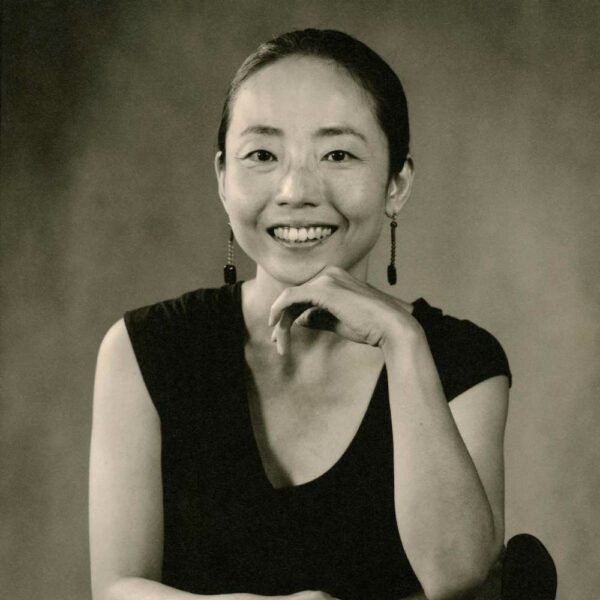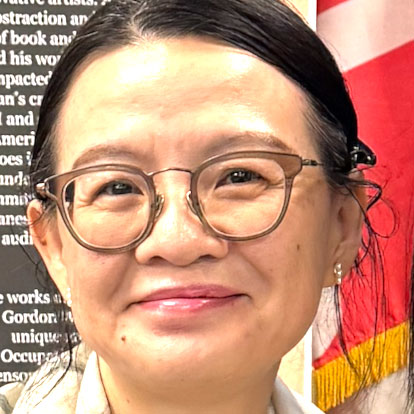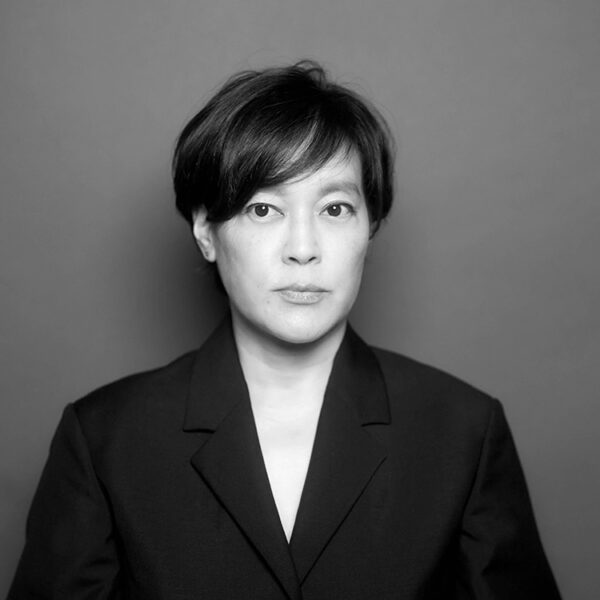国際シンポジウム
カウボーイ文化の韓国および東アジアの大衆文化に与えた影響とその広がり
本シンポジウムでは、アメリカ文化がポピュラー音楽、ファッション、映画・テレビ、文学といったジャンルに与えた影響について検討します。ジーンズやアメリカンスタイルのポピュラー音楽は、冷戦期の文化的ヘゲモニーや、公式・非公式を問わない消費財の地下経済を通じて拡張していったアメリカ大衆文化の中で登場しました。
韓国研究および関連分野の研究者たちが、ファッション、文学、映画、ポピュラー音楽といったジャンルにおける事例について発表します。たとえば1950年代の韓国におけるアメリカ軍キャンプで流行した「アリゾナ・カウボーイ」(1958)や「靴磨きの少年」(1952)といったアメリカのポピュラー音楽は、アメリカ文化への土着的な理解と誤解の両方を伝える強力な媒体となりました。
その後、アメリカと同盟関係にあったアジア諸国(韓国、台湾、日本など)で1940年代に生まれた、いわゆるベビーブーム世代は、ジーンズ、アメリカのポピュラー音楽、そしてアメリカブランドの消費財を日常的に享受しながら育ちました。
本シンポジウムは、第二次世界大戦後のアジアにおいて「アメリカ的カウボーイ文化」がどのように拡張されていったかを広い視野で捉え、ハリウッド映画、観光地、子ども向け玩具の導入などを含めて検討します。たとえば1980年代には多くの日本人観光客がハワイを訪れ、カウボーイをテーマにしたエンターテインメントを体験しました。また1995年の映画『トイ・ストーリー』では、子どもたちが「ウッディ(保安官ウッディ・プライド)」に強く惹きつけられました。
日本においては、アメリカ西部劇に登場するカウボーイが侍と共通点を持つと受け止められた一方で、ファッションとして取り入れられたのはカウボーイスタイルではなく、もっぱらジーンズでした。ジーンズの日本での受容の歴史において、いつどのようにジーンズが男性の服装として受け入れられていったのか、韓国・台湾とあわせて考察されます。
韓国では20世紀を通じて、さまざまな形の西部劇が上映されたり、韓国版として制作されたりしてきました。韓国のミュージシャンや映画監督たちが、アメリカの西部劇映画をどのように翻案し、国内外の観客に届けていったのかを論じます。
また、1953年以降、米軍の舞台でミュージシャンたちは人気を集め、「アメリカン・ドリーム」のイメージが「靴磨きの少年(1952)」「アメリカ・チャイナタウン(1954)」「アリゾナ・カウボーイ(1955)」といったポピュラーソングにおいて、複雑かつ分散的なかたちで描かれていきました。
本シンポジウムでは、1950〜60年代の韓国ポピュラー音楽におけるアメリカ文化の影響、とりわけ米軍「在韓米軍・第8軍クラブ」文化が果たした役割に焦点を当て、文化変容の媒介として検討します。
日本の研究者たちはこれまで、アメリカ大衆文化の国際的・汎アジア的な展開からやや距離を置いてきました。本シンポジウムは、ファッション、映画、ポピュラー音楽を専門とする日本の研究者たちが、太平洋地域におけるアメリカ文化のヘゲモニーをより広い文脈で捉える契機となるでしょう。
プロジェクトディレクター
本橋弥生 [京都工芸繊維大学 デザイン・建築学系准教授]
共催者
キョンヒ・ピュン [ニューヨーク州立ファッション工科大学教授]
日時
2025年12月12日(金)
10:00–16:55
場所
京都工芸繊維大学 KYOTO Design Lab 2階
Google map
参加
無料、申込不要
言語
英語
発表予定テーマ
- アメリカのカウボーイ文化がアジアのストリートファッションに与えた影響
- トランスナショナルな造形:剣戟、刺客、浪人、そしてカウボーイ
- 西部劇、ジーンズ、ストリートファッション
- エイティ・アーミー・クラブ文化:1950年代の韓国ポップカルチャーへのアメリカ音楽の影響
- 韓国と日本における「カントリーミュージック」のポピュラーソング (流行歌)
- 『アリゾナ・カウボーイ』の制作:「アメリカ西部」のイメージ形成と感覚的経験
| プログラム 2025年12月12日(金) |
|||
| 時間 | セッション | 登壇者 | モデレーター |
| 10:00–11:50 | Session 1 | Jean Amato Ying-Chen Peng Junhee Lee Hyun-Suk Seo |
Kyunghee Pyun |
| 11:50–12:00 | 小休憩 | ||
| 12:00-12:30 | 基調講演 | Youngna Kim | |
| 12:30–13:30 | ランチ休憩 | ||
| 13:30–15:15 | Session 2 | Kyunghee Pyun Jaye Rhee Yung Bin Kwak Zhaohua Ho |
Kyunghee Pyun |
| 15:15–15:25 | 小休憩 | ||
| 15:25–16:55 | Session 3 | Shin Aoki Mari Nagatomi Yayoi Motohashi |
Yutaka Nakamura |
| 登壇者・発表タイトル(姓アルファベット順) | |
 Jean AMATO Jean AMATO |
Cowboys in Pan-Asian Forms: Swordplay, Assassins, Wandering Ronin (汎アジア的フォルムとしてのカウボーイ:剣戟、刺客、浪人) Abstract & Biography |
 Shin AOKI Shin AOKI |
Were They “Cowboys”?: A Brief Sketch of Country Music Performers in the U.S. Military Touring East Asia, 1945-1959 (彼らは「カウボーイ」だったのか?:東アジアで従軍したカントリー・ミュージシャンたち 1945–1958) Abstract & Biography |
| Zhaohua Ho | The Reception of the Cowboy Image as a Subcultural Symbol in Taiwan and the Influence of American Culture (台湾におけるサブカルチャー的象徴としてのカウボーイ像の受容とアメリカ文化の影響) |
 Youngna KIM Youngna KIM |
The Impact of American Popular Culture in Korea: Embodied by Blue Jeans (ジーンズに体現されたアメリカ大衆文化の韓国への影響) Abstract & Biography |
 Yung Bin KWAK Yung Bin KWAK |
From Arizona to Manchuria Towards Space and Beyond: A Critical Genealogy of Cowboys in Contemporary Korean Imaginary (アリゾナから満州、そして宇宙とその先へ:現代韓国の想像界におけるカウボーイの批判的系譜学) Abstract & Biography |
 Junhue LEE Junhue LEE |
Romanticizing Cowboys and Ranches in Korean Popular Music: Reception of the Country & Western Genre in the 1950s (韓国ポピュラー音楽におけるカウボーイと牧場のロマン化:1950年代のカントリー&ウェスタン受容) Abstract & Biography |
 Yayoi MOTOHASHI Yayoi MOTOHASHI |
From Cowboys to Rock: The Transcultural Evolution of Denim and American Style in Japanese Fashion (カウボーイからロックへ:日本のファッションと音楽におけるデニムとアメリカン・スタイルの越境的展開) Abstract & Biography This research was supported by JSPS KAKENHI Grant Numbers 23K00227. |
 Mari NAGATOMI Mari NAGATOMI |
Cowboys as Folk: American Country Music and Western Movies in the early 1960s (民衆としてのカウボーイ──1960年代初頭のアメリカン・カントリー音楽と西部劇) Abstract & Biography |
 Ying-chen PENG Ying-chen PENG |
A Different Blue: The Rise of Jeans in China’s Reform Era (異なるブルー:中国改革開放期におけるジーンズの隆盛) Abstract & Biography |
 Kyunghee PYUN Kyunghee PYUN |
Consuming “Cowboy” in Korean Material Culture: Impact of “American Style” from the 1950s to the 1980s (韓国の物質文化における「カウボーイ」の消費:1950〜80年代の「アメリカン・スタイル」の影響) Abstract & Biography |
 Jaye RHEE Jaye RHEE |
Once-Unfamiliar Names, Imagined Homes: Transnational Longing in Korean Ballads and Contemporary Art (馴染みなき名と想像上の故郷:韓国歌謡と現代美術における越境的な憧憬) Abstract & Biography |
 Hyun-Suk SEO Hyun-Suk SEO |
Once Upon a Time in Manchuria (かつて満州で) Abstract & Biography |
| モデレーター | ||
 |
中村 寛 Yutaka Nakamura 文化人類学者/デザイン人類学者。多摩美術大学リベラルアーツセンター/大学院教授。アトリエ・アンソロポロジー合同会社代表。KESIKI Inc.にてInsight Designを担当。「周縁」における暴力、社会的痛苦、反暴力の文化表現、脱暴力のソーシャル・デザインなどの研究テーマに取り組む一方、人類学に基づくデザインファーム《アトリエ・アンソロポロジー》を立ちあげ、様々な企業、デザイナー、経営者と社会実装を行う。 https://atelier-anthropology.com/about |
|
※本イベントでは、記録・広報を目的とした写真および映像の撮影が予定されています。撮影された写真や映像は、KYOTO Design Labの広報活動に関連する各種媒体(Webサイト、SNS、刊行物等)で利用される場合があります。写り込みを希望されない方は当日スタッフまでお申し出ください。
International Symposium
Influence of Cowboy Culture on Korean Popular Culture and Beyond
This international symposium contemplates on the influence of American culture in genres of popular music, fashion, film and television, and literature. Blue jeans and American style popular music emerged in the expansion of American popular culture by means of cold war cultural hegemony and underground economy of consumer products—both officially and unofficially. Scholars of Korean studies and related disciplines make a presentation about genres such as fashion, literature, movies, and popular music. The popular songs like Arizona Cowboy (1958) and Shoeshine Boy (1952) in the US army camps in South Korea were powerful mediators of disseminating the indigenous perception of as well as the misconception of American popular culture. Subsequently the generation born in the 1940s (so-called baby boomers) in Asian countries of the U.S. alliance (South Korea, Taiwan, Japan, and so on) grew up consuming blue jeans, American popular music, and American-brand consumer products. This symposium includes an expansive version of “American cowboy culture” in post-WWII Asia with the introduction of Hollywood movies, tourist attractions, and children’s toys. For example, many Japanese tourists used to go to Hawaii to participate in cowboy-themed entertainment in the 1980s while children developed desire for “Woody” (Sheriff Woody Pride) in Toy Story (1995).
In Japan, although cowboys in American Western films were perceived as having something in common to samurai warriors, only jeans were accepted as fashion, not the cowboy style. In the lineage of the history of blue jeans in Japan. Scholars in this symposium speculate on since when and how jeans became acceptable forms of menswear in Japan, Korea, and Taiwan.
In Korea, many versions of the Western film were shown to the public in theaters or created as a Korean version throughout the twentieth century. Scholars want to discuss how Korean musicians and film makers adapted the US-based “Western” film as a genre for the audiences of Korea and beyond its national, linguistic borders.
Likewise, since 1953, musicians based on the Stage were trained and earned popularity, and images of the ‘American Dream’ were addressed — in a complex and decentralized way — in popular songs like Shoeshine Boy (1952), America Chinatown (1954), and Arizona Cowboy (1955). This symposium will explore this American cultural impact on Korean popular music in the 1950s and 60s, focusing on the US Eighth Army Club’s culture as a major cultural medium through which Korean pop music was transformed.
Scholars in Japan have been somewhat isolated from an international or pan-Asian development of American popular culture. This symposium will become an opportunity for Japanese scholars of fashion, cinema, and popular music to see a larger context of the US cultural hegemony in the Pacific region.
Project Director
Yayoi Motohashi [Associate Professor, Kyoto Institute of Technology]
Co-organizer
Kyunghee Pyun [Professor, State University of New York, Fashion Institute of Technology]
Date
December 12, 2025 (Friday)
10:00–16:55
Venue
2F, KYOTO Design Lab, Kyoto Institute of Technology
Google map
Admission
Free, no registration required.
Language
English
Themes
- Influence of American Cowboy Culture on Asian Street Fashion
- Transnational Forms: Swordplay, Assassins, Wandering Ronin and Cowboys
- Cowboys in the Western Film, Blue Jeans, and Street Fashion
- The Eighth Army Club Culture: Impact of American Music on Korean Popular Culture in the 1950s
- Popular Songs of “Country Music” in South Korea and Japan
- The Making of Arizona Cowboy: Imagery of “the American West”
| Program December 12, 2025 |
|||
| Time | Session | Speakers | Moderators |
| 10:00–11:50 | Session 1 | Jean Amato Ying-Chen Peng Junhee Lee Hyun-Suk Seo |
Kyunghee Pyun |
| 11:50–12:00 | Short Break | ||
| 12:00-12:30 | Plenary Lecture | Youngna Kim | |
| 12:30–13:30 | Lunch Break | ||
| 13:30–15:15 | Session 2 | Kyunghee Pyun Jaye Rhee Yung Bin Kwak Zhaohua Ho |
Kyunghee Pyun |
| 15:15–15:25 | Short Break | ||
| 15:25–16:55 | Session 3 | Shin Aoki Mari Nagatomi Yayoi Motohashi |
Yutaka Nakamura |
| Speakers and Titles (organized by the last name in capital) | |
 Jean AMATO Jean AMATO |
Cowboys in Pan-Asian Forms: Swordplay, Assassins, Wandering Ronin Abstract & Biography |
 Shin AOKI Shin AOKI |
Were They “Cowboys”?: A Brief Sketch of Country Music Performers in the U.S. Military Touring East Asia, 1945-1959 Abstract & Biography |
| Zhaohua Ho | The Reception of the Cowboy Image as a Subcultural Symbol in Taiwan and the Influence of American Culture |  Youngna KIM Youngna KIM |
The Impact of American Popular Culture in Korea: Embodied by Blue Jeans Abstract & Biography |
 Yung Bin KWAK Yung Bin KWAK |
From Arizona to Manchuria Towards Space and Beyond: A Critical Genealogy of Cowboys in Contemporary Korean Imaginary Abstract & Biography |
 Junhue LEE Junhue LEE |
Romanticizing Cowboys and Ranches in Korean Popular Music: Reception of the Country & Western Genre in the 1950s Abstract & Biography |
 Yayoi MOTOHASHI Yayoi MOTOHASHI |
From Cowboys to Rock: The Transcultural Evolution of Denim and American Style in Japanese Fashion Abstract & Biography This research was supported by JSPS KAKENHI Grant Numbers 23K00227. |
 Mari NAGATOMI Mari NAGATOMI |
Cowboys as Folk: American Country Music and Western Movies in the early 1960s Abstract & Biography |
 Ying-chen PENG Ying-chen PENG |
A Different Blue: The Rise of Jeans in China’s Reform Era Abstract & Biography |
 Kyunghee PYUN Kyunghee PYUN |
Consuming “Cowboy” in Korean Material Culture: Impact of “American Style” from the 1950s to the 1980s Abstract & Biography |
 Jaye RHEE Jaye RHEE |
Once-Unfamiliar Names, Imagined Homes: Transnational Longing in Korean Ballads and Contemporary Art Abstract & Biography |
 Hyun-Suk SEO Hyun-Suk SEO |
Once Upon a Time in Manchuria Abstract & Biography |
| Moderator | ||
 |
Yutaka Nakamura Yutaka Nakamura is a cultural anthropologist, design anthropologist, and holds a Ph.D. from Hitotsubashi University. He is the CEO of Atelier Anthropology LLC., a professor at the Tama Art University’s Liberal Arts Center & Graduate School of Art and Design, and is in charge of Insight Design at KESIKI INC. While researching topics such as violence in “marginal” societies, social suffering, cultural expressions of anti-violence, and social design for de-violence, he also launched Atelier Anthropology LLC., a design firm based on anthropology. https://atelier-anthropology.com/about |
|
*Photos and videos will be taken during the event solely for documentation and publicity purposes. These may be used in KYOTO Design Lab’s official media, such as the website, social media, and publications. If you prefer not to appear in photos or videos, please inform a staff member during the event.